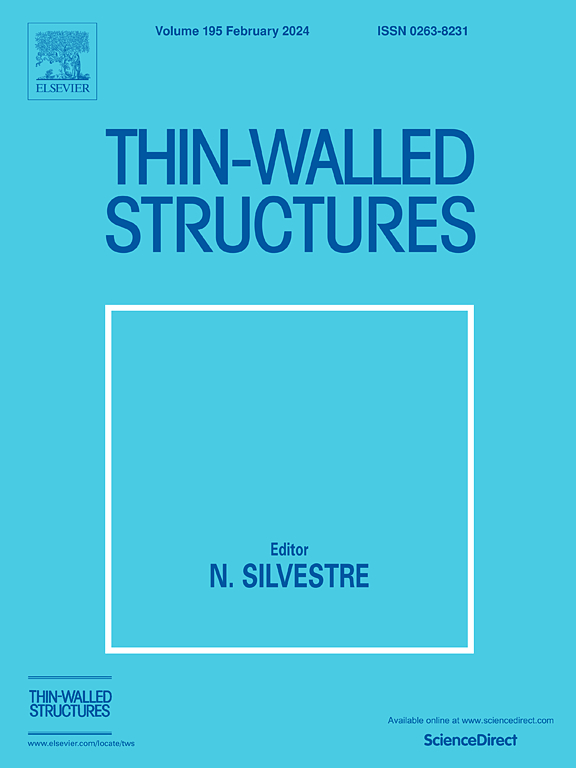Uncertainty sensitivity analysis for vibration properties of composite doubly-curved shallow shells using Kriging method
IF 5.7
1区 工程技术
Q1 ENGINEERING, CIVIL
引用次数: 0
Abstract
This paper presents a Kriging based global sensitivity analysis (GSA) method for the frequency response of displacements of composite doubly-curved shallow shells. A unified solution is utilized to develop the dynamic vibration formulation using the First-order Shear Deformation Theory (FSDT) and the Rayleigh–Ritz method. Kriging surrogate model is employed to substitute the frequency response function (FRF) of displacements. Ten parameters including materials and geometrical dimension are considered as input uncertain variables. A variance-based GSA method for dynamic model is employed to quantify the influence of each uncertain parameter. In addition, to avoid the computational burden of Monte Carlo simulation method (MCS), the presented sensitivity indices are computed analytically based on the Kriging mode, which further improves computational efficiency. Based on the convergence studies and comparison with traditional methods, the accuracy and efficiency of the present method are validated. The results shows that the frequency response of displacements exhibits greater sensitivity to changes in width, and thickness is more influential than others in the example from this article. Finally, the presented numerical results demonstrate vibration characteristics of different types of shells and observation points, which can also serve as a reference for further study on uncertainty-propagation analysis.
使用克里金法进行复合双曲浅壳振动特性的不确定性敏感性分析
本文提出了一种基于克里金法的全局灵敏度分析(GSA)方法,用于分析复合材料双曲浅壳的位移频率响应。利用一阶剪切变形理论(FSDT)和 Rayleigh-Ritz 方法,采用统一的解决方案来制定动态振动公式。采用克里金替代模型来替代位移的频率响应函数(FRF)。包括材料和几何尺寸在内的十个参数被视为输入不确定变量。采用基于方差的动态模型 GSA 方法来量化每个不确定参数的影响。此外,为了避免蒙特卡罗模拟法(MCS)的计算负担,所提出的灵敏度指数是基于克里金模式分析计算的,这进一步提高了计算效率。基于收敛性研究以及与传统方法的比较,验证了本方法的准确性和高效性。结果表明,在本文的示例中,位移的频率响应对宽度的变化表现出更大的敏感性,而厚度的影响比其他因素更大。最后,本文给出的数值结果展示了不同类型壳体和观测点的振动特征,也可作为进一步研究不确定性传播分析的参考。
本文章由计算机程序翻译,如有差异,请以英文原文为准。
求助全文
约1分钟内获得全文
求助全文
来源期刊

Thin-Walled Structures
工程技术-工程:土木
CiteScore
9.60
自引率
20.30%
发文量
801
审稿时长
66 days
期刊介绍:
Thin-walled structures comprises an important and growing proportion of engineering construction with areas of application becoming increasingly diverse, ranging from aircraft, bridges, ships and oil rigs to storage vessels, industrial buildings and warehouses.
Many factors, including cost and weight economy, new materials and processes and the growth of powerful methods of analysis have contributed to this growth, and led to the need for a journal which concentrates specifically on structures in which problems arise due to the thinness of the walls. This field includes cold– formed sections, plate and shell structures, reinforced plastics structures and aluminium structures, and is of importance in many branches of engineering.
The primary criterion for consideration of papers in Thin–Walled Structures is that they must be concerned with thin–walled structures or the basic problems inherent in thin–walled structures. Provided this criterion is satisfied no restriction is placed on the type of construction, material or field of application. Papers on theory, experiment, design, etc., are published and it is expected that many papers will contain aspects of all three.
 求助内容:
求助内容: 应助结果提醒方式:
应助结果提醒方式:


